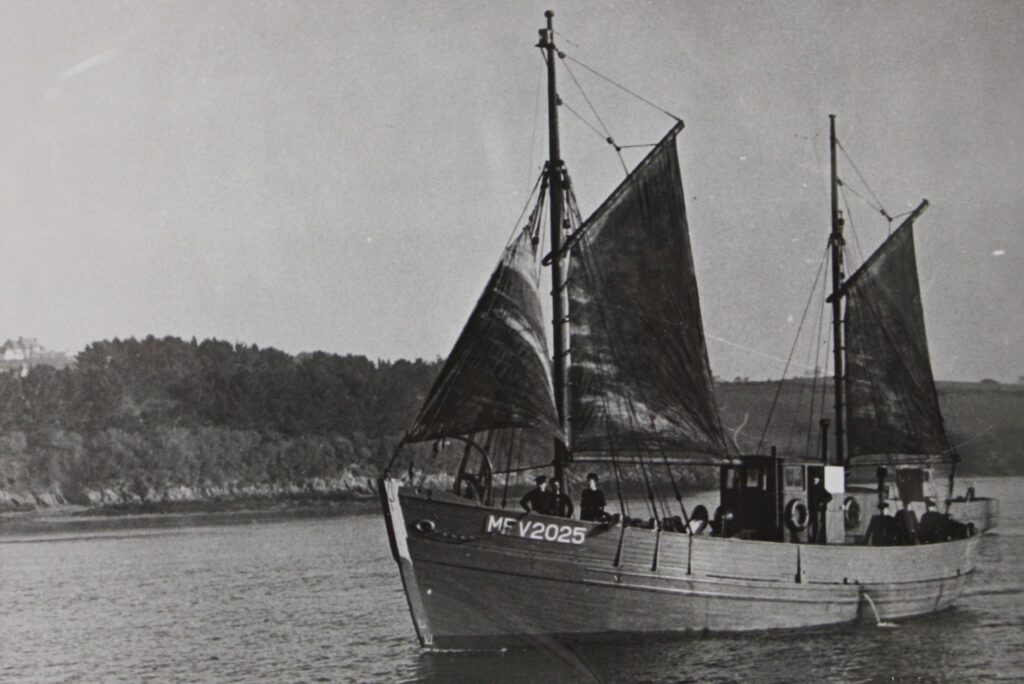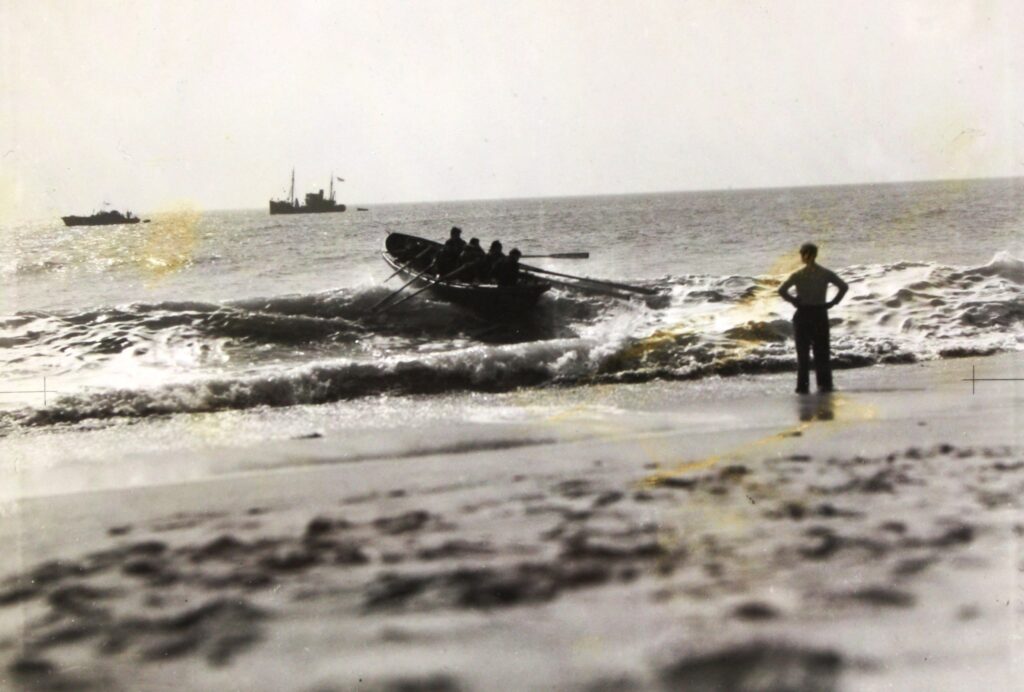It is well-known in the local area that the Helford River was a Special Operations Executive (SOE) base during World War II. Although this is mentioned in several books and pamphlets, the full story has not, so far, been published in any detail. A document in the archives of the National Maritime Museum Cornwall tells the story in the words of one of the men who ran the Base, Lt Cdr Bevil Warington Smyth. This stimulated more work on the story, aspects of which are covered in this series of pages.
Helford was well-placed to make secret contact with Brittany after the fall of France. The sealines were short and the wide open spaces made it difficult for the enemy to patrol everywhere. Night trips were therefore possible, to supply arms and to land and retrieve agents.
The Base, created by Lt Gerry Holdsworth, started out with high hopes, marshalling some fishing vessels which had crossed over with refugees and using these to establish contacts in Brittany, usually in broad daylight.

However, policy conflicts with secret Naval operations and lack of fast craft, constrained what the Base could achieve. The enemy also became better organised, restricting where fishing fleets could go and establishing a better intelligence network in France.
In the early years of 1943 the operation was re-organised, combining the irregular Naval operations previously based in Dartmouth, with the Helford SOE work to create the Inshore Patrol Flotilla (IPF) based in the Helford. The IPF was commanded by Lt Cdr Nigel Warington Smyth while his brother, Lt Cdr Bevil Warington Smyth ran the SOE branch which became mainly a training establishment for agents being sent to other theatres, notably the Mediterranean.
Nigel had originally been tasked with finding out why a number of secret missions to Norway had failed when landing on beaches. He concluded that the small boats being used for the final approach were too small and unable to land or launch effectively in the surf. So he set about designing alternatives. He carried out a series of tests of various designs on Praa Sands in August 1942 (SLIDERULE), March 1943 (PLANIMETER) and February and March 1944. His reports are illuminating in their analysis of the way in which waves break and the type of boats best suited to such conditions.

The most famous IPF mission, entitled FELICITATE, took place in December 1943 when some 27 agents, sailors and airmen were rescued from occupied France on the night of 25/26 December, returning in time for a late Christmas dinner. This was a combined Navy and SOE operation.
After D Day and the re-invasion of France on 6 June 1944, the need for the SOE base and IPF activities faded away and the Base was finally closed in March 1945.
The Bartlett Volunteers have transcribed a large number of original documents about the Helford Base. Included here are:
- The SOE and Helford Base in WWII – by Lt Cdr Bevil Warington Smyth
- A gallery of some of the vessels involved in the IPF
- Testing surf boats – reports on SLIDERULE (August 1942) and PLANIMETER (March 1943), with a list of some of the boats involved
- Operation FELICITATE December 1943
- Gun Running – an account by Lt Cdr Nigel Warington Smyth of operation KNOCKOUT in September 1944
The daily Logbook of the SOE base from October 1942 to March 1945 is also available but is too long (200 pages of A4) to be included here.
Sources
As well as documents in the archives of the National Maritime Museum Cornwall, the main sources used included several files in the National Archives and a book, Secret Flotillas – Clandestine Sea Lines to France & French North Africa 1940-1944 by Brooks Richards who had served in the Helford in the early days and later served in the Mediterranean.1 He also produced a short leaflet for a Helford Regatta event.
Other sources include: SOE in France by MRD Foot, The Cockleshell Heroes by Quentin Rees, Operation Cornwall by Viv Acton and Derek Carter, The Secret War from the River Dart by Lloyd Bott and A Dangerous Enterprise – Secret War at Sea by Tim Spicer which looks at the operation from the point of view of 15th MGB Flotilla.
Researchers have also spoken to the families of some of those involved.
